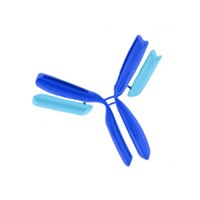OP74 Sigma-AldrichAnti-PKC (Ab-2) Mouse mAb (MC5)
This Anti-PKC (Ab-2) Mouse mAb (MC5) is validated for use in Blocking Studies, Immunoblotting, Immunoprecipitation, Paraffin Sections for the detection of PKC (Ab-2).
More>> This Anti-PKC (Ab-2) Mouse mAb (MC5) is validated for use in Blocking Studies, Immunoblotting, Immunoprecipitation, Paraffin Sections for the detection of PKC (Ab-2). Less<<Sinónimos: Anti-Protein Kinase C
Productos recomendados
Descripción
| Replacement Information |
|---|
Tabla espec. clave
| Species Reactivity | Host | Antibody Type |
|---|---|---|
| B, H, M, R | M | Monoclonal Antibody |
| Product Information | |
|---|---|
| Form | Liquid |
| Formulation | In 50 mM sodium phosphate buffer, 0.2% gelatin. |
| Positive control | NIH3T3 cells or brain tissue |
| Preservative | ≤0.1% sodium azide |
| Physicochemical Information |
|---|
| Dimensions |
|---|
| Materials Information |
|---|
| Toxicological Information |
|---|
| Safety Information according to GHS |
|---|
| Safety Information |
|---|
| Product Usage Statements |
|---|
| Storage and Shipping Information | |
|---|---|
| Ship Code | Blue Ice Only |
| Toxicity | Standard Handling |
| Storage | +2°C to +8°C |
| Do not freeze | Yes |
| Packaging Information |
|---|
| Transport Information |
|---|
| Supplemental Information |
|---|
| Specifications |
|---|
| Global Trade ITEM Number | |
|---|---|
| Número de referencia | GTIN |
| OP74 | 0 |
Documentation
Anti-PKC (Ab-2) Mouse mAb (MC5) Ficha datos de seguridad (MSDS)
| Título |
|---|
Anti-PKC (Ab-2) Mouse mAb (MC5) Certificados de análisis
| Cargo | Número de lote |
|---|---|
| OP74 |
Referencias bibliográficas
| Visión general referencias |
|---|
| Xiao, H., et al. 1994. J. Neurosurg. 81, 734. Jin, L., et al. 1993. Am. J. Pathol. 142, 569. Nishikawa, M., and Shirakawa, S., 1992. Leuk. Lymphoma 8, 201. Wetsel, W.C., et al. 1992. J. Cell. Biol. 117, 121. Clark, E.A., et al. 1991. Lab. Invest. 64, 35. Hirabayashi, N., et al. 1990. Mol. Carcinog. 3, 171. Nishizuka, Y., 1989. Cancer 63, 1892. Yong, S., et al. 1988. Eur. J. Biochem. 173, 247. |







